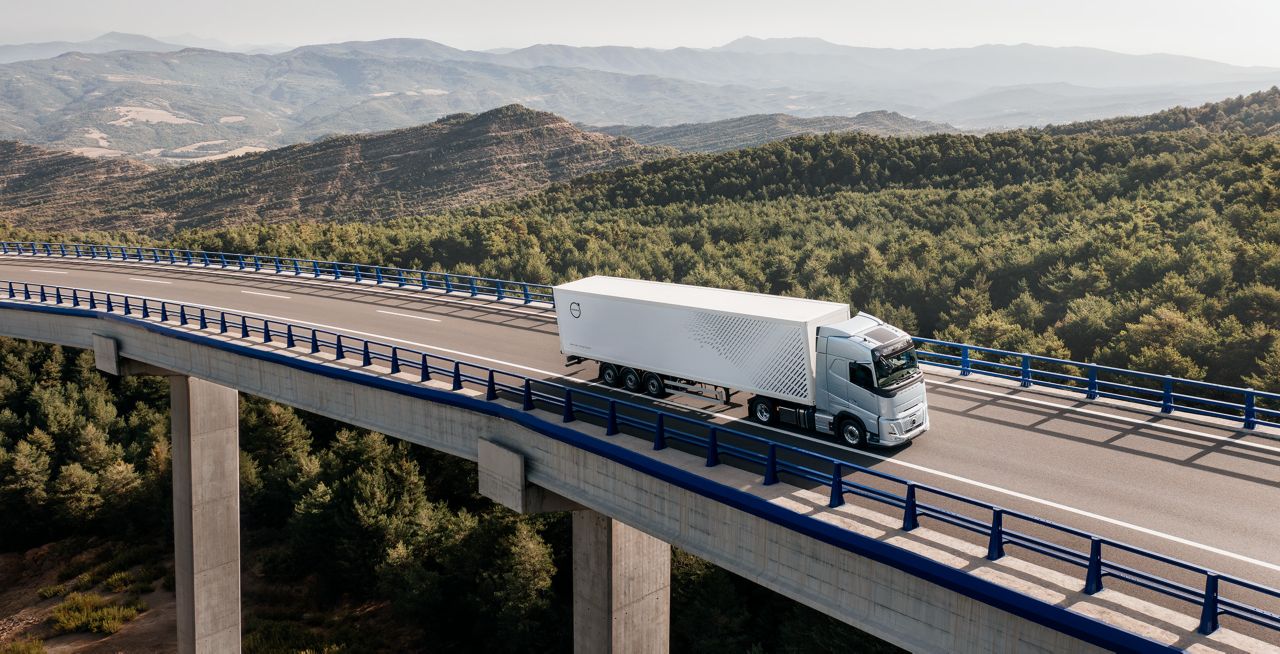A global shortage of drivers is shaping up to be a major issue that affects the whole transport industry. But there are ways in which employers can attract drivers and also keep them motivated. What are drivers’ main priorities, and how can knowledge of these benefit your daily fleet operation?
According to IRU’s* annual driver survey from 2022, over 2.6 million truck driver jobs went unfilled in 2021, despite general wage increases and a readily-available workforce. According to the report, the reason for this is a general problem in attracting young people to the role of driver, in combination with a high proportion of older drivers approaching retirement. This does not just affect transport operators and their services. Consequences can be seen throughout the supply chains, ultimately affecting business and consumers all over the world.
For a driver, there are different kinds of reasons to stay and remain motivated in their work. According to an internal Volvo research survey (2019) based on 151 interviews with mainly long haulers from 16 nationalities** dedicated to international transport, drivers’ top three priorities are comfort and space in the cab and security. The study also indicates an increasing awareness of health, mainly from younger drivers, and a growing interest in environmentally-friendly drivelines.
“Comfort, space, and security have been the same priorities for many years, so there is definitely a continuity for these basic requirements. We can also see a correlation between the length of the journey and level of satisfaction for certain brands. The more time you spend in your truck, the more important space and safety are,” says Delphine Maury, Senior Product Intelligence Analyst at Volvo Group Truck Technology (GTT).
Driver priorities can vary between nationalities and in which countries and routes you drive. Not all drivers have the ability to pay for secure truck stops, Delphine adds.
What motivates a truck driver?
DRIVER COMFORT: According to the survey, driver comfort mainly refers to sleeping and resting arrangements, which are considered very important, as well as driver seat comfort. When asked what they prefer, besides basic driver seat comfort, over 58% prioritize larger resting and relaxing space.
CAB SPACE: Cab roominess is essential. 72% of all drivers asked, prioritized this as very important. Every centimeter can add value and the feeling of space and room is even more important for long haul drivers.
SAFETY: The safety aspect involves both truck security and driver safety. In terms of security the top 3 feature priorities requested are fuel robbery alert, alarm for gas attacks and a complementary cab door interior security lock. For driver safety, 62% of drivers in a recent (2022) Volvo internal online study** said they preferred driving assistance, such as lane keeping, lane change assistance, emergency braking etc. The second most appreciated driver safety priority relates to different kinds of alarms; like protection against falling asleep and preventions against aggression and theft (55%).
Internal research from 2021 in English, German, French and Swedish concludes that operators need to focus on both current and new drivers to tackle the problem of driver shortage.
New drivers were drawn to the profession by low entry requirements, and for 36% of them salary is the top priority followed by training (16%) and travel (11%). For experienced drivers, 42% name salary as a key motivator, followed by autonomy, the freedom of being on the road (19%) and having an appreciated employer (16%) as more valuable.
There is also a clear indication of what demotivates the drivers. For 49 % of the new drivers the uncertainty of finding a job is a big concern even though transport companies have a high demand for their competence. Consequently, there is a potential here for operators to start early on with a positive onboarding process in order to secure a long-term relationship with their potential drivers. The new drivers were worried about finding a job, but also upon being employed they felt that they were not well equipped to deal with the demands of the profession when fresh out of training. Intense pressure from an employer to deliver quickly, combined with insecurities about maneuvering a truck in heavy traffic and fear of accidents, made them consider quitting early due to stress.
For experienced drivers, employers and working conditions have a major influence on their work. An employer treating drivers badly made them see the profession in a less favorable light. Work conditions included high pressure, stress and risk of accidents, all of which are seen as reasons to quit or change job.
How to attract and keep your drivers
There are several aspects that affect driver satisfaction: they depend on experience, as well as where, how and for how long drivers work. According to Delphine Maury, some general recommendations can be formed.
1. Communication and proactivity. Dialogue and interactions with your drivers are the most important aspect. “Drivers are often happy to give feedback and contribute. Paying attention to driver feedback is essential, to feel that you are being heard and listened to. Particularly in relation to the kinds of difficulties and challenges they face during their workday”, says Delphine.
2. Truck choice and features. Advice and recommendations from drivers regarding truck feature requirements and overall manufacturing choices are crucial. Pay attention to what might be missing and give constructive suggestions on when and why driver suggestions can or can’t be met.
3. Rewards and incentives. Incentives are key. When it comes to fuel or battery consumption, for example, most operators have high set goals and ambitions. “We can see a general lack of incentives and positive feedback. Drivers are more often criticized when they fail to reach targets, but less is being said when they continue to meet their goals or overachieve”, says Delphine.

Your drivers are your brand image; they are the face of your business to your customers every day. In the end the best drivers contribute to your overall business development. But it’s equally important for them to know what to expect.
Why it’s important to consider driver priorities
The first and most important aspect is the lack of drivers and the increasing driver shortage. Overlooking driver priorities and pain points don’t just mean pressure on drivers, it can also mean turning down potential customers. It can create difficulties for planning and, ultimately, lead to cost losses.
According to Delphine Maury, there are several other incentives that will help you keep the best drivers. To retain those who continue to deliver, make an effort, and be a reliable and safe option for your customers. Certain journeys are more demanding than others and customers might well prefer some drivers over others.
“Your drivers are your brand image; they are the face of your business to your customers every day. In the end the best drivers contribute to your overall business development. But it’s equally important for them to know what to expect. Offer driver guidance and give them a chance to improve”, says Delphine.
Consider driver key priorities to prevent driver shortage
When asked about either the most important thing or the main weakness of their truck, drivers often talk about comfort***. This can materialize as driver comfort (seat, position), working comfort (steering, shifting) and resting comfort (bed, storage). These aspects are not delivering the highest levels of satisfaction for drivers at present: the main concerns being cab access, visibility, and safety.
Safety is seen by drivers as the main topic that will influence their job in the future. This topic can also take multiple forms, such as driver safety and truck security: some aspects, like personal safety, seem to be more concerning for international drivers.
“To address these pain points that keep coming back in research studies, it’s important to have a continuous dialogue with your drivers. Feedback, proactivity and driver expectations should not be underestimated”, says Delphine.
Here you can learn more about driver support and driver development.
*International Road Transport Union. Countries surveyed: United Sates, Mexico, Argentina, Europe (Spain, Italy, France, UK, Ireland, Germany, Poland, Romania, Belgium, Netherlands), Eurasia (Russia, Uzbekistan, Ukraine), Turkey, Iran, China
**Respondents from 16 nationalities: Portugal, Spain, France, Germany, Belgium, Netherlands, Sweden, Denmark, Poland, Czech Republic, Slovenia, Lithuania, Estonia, Romania, Bulgaria, Hungary.
*** Internal Volvo Research online study with 517 truck drivers in France, Germany, and England.


